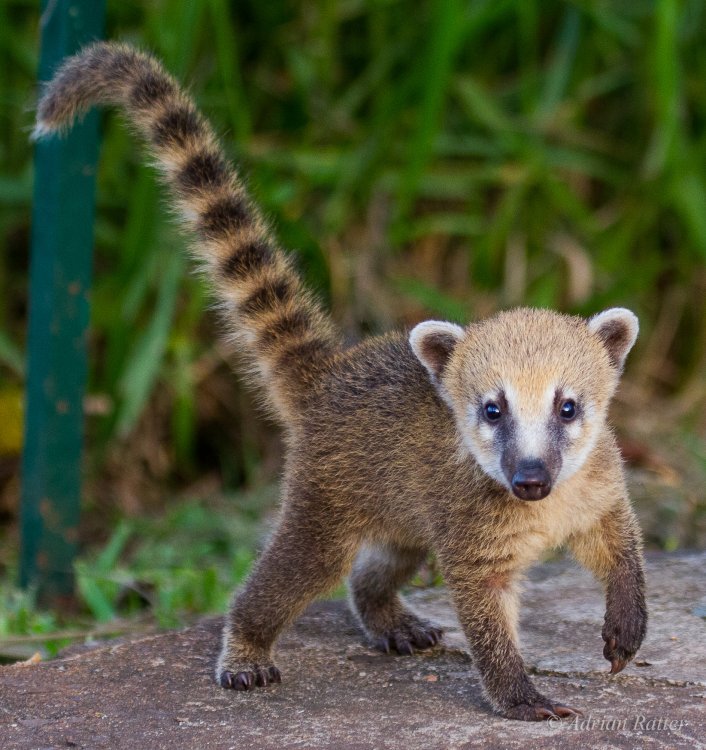
Coatis are the members of the raccoon family, Procyonidae. All are arboreal. Most are
mammals living in the lower elevations of temperate
and tropical regions, in areas rich in water
and trees.
Procyonids are omnivores, eating insects, crayfish,
crabs, fishes, amphibians, reptiles, birds,
small mammals, nuts, fruits, roots, and young
plants. Procyonids eat what is available, including
carrion, depending on season, locale, and availability.
Red pandas eat bamboo, honey, grass,
vines, other plants, and some meat.
Coati
Coatimundis inhabit South American lowland
forests and grasslands, and dry, high-altitude forests.
They have long, furry, ringed tails, are fine
climbers, and live in trees and on the ground. Unlike
most Procyonidae, they are diumal. Their
bodies look like those of other raccoons, and their
front limbs have long claws. Males grow to 4 feet
long and weigh fourteen pounds, while females
are 3.5 feet long and weigh ten pounds. They are a
yellow-red color on their bodies, while their faces
are black, with white spots around each eye and
on each cheek. Their throats and bellies are also
white. Coatis eat insects and other arthropods,
crabs, frogs, lizards, mice, and reptile eggs.
Adult males are solitary but females and
young live in bands of up to twelve members.
Mating occurs in February or March, when a visiting
male impregnates each adult female in a band.
Gestation is 2.5 months, and about a month before
birthing, each female leaves the band and
builds a tree nest. There, she gives birth to up to
five babies, each weighing six ounces. Babies are
nestbound for six weeks. Then mother and young
rejoin the band. Life spans of coatis are seven to
nine years in the wild and up to fourteen years in
captivity.
Coati Facts
Classification:
Kingdom: Animalia
Subkingdom: Bilateria
Phylum: Chordata
Subphylum: Vertebrata
Class: Mammalia
Order: Carnivora
Family: Procyonidae
Genus and species: Nasua nasua (ringtailed coatimundi), N.
narica (white-nosed coati), N. nelsoni (island coati); Nasuella
olivacea (mountain coati)
Geographical location: Central and South America
Habitat: Mostly lower elevations of temperate and tropical regions,
in areas well supplied with water and trees
Gestational period: 2.5 months
Life span: Ten to thirty years, depending on species
Special anatomy: Dexterous five-toed front paws; sixth, thumblike
toe; prehensile tail
Other popular Animals
Photo Gallery of - Coati
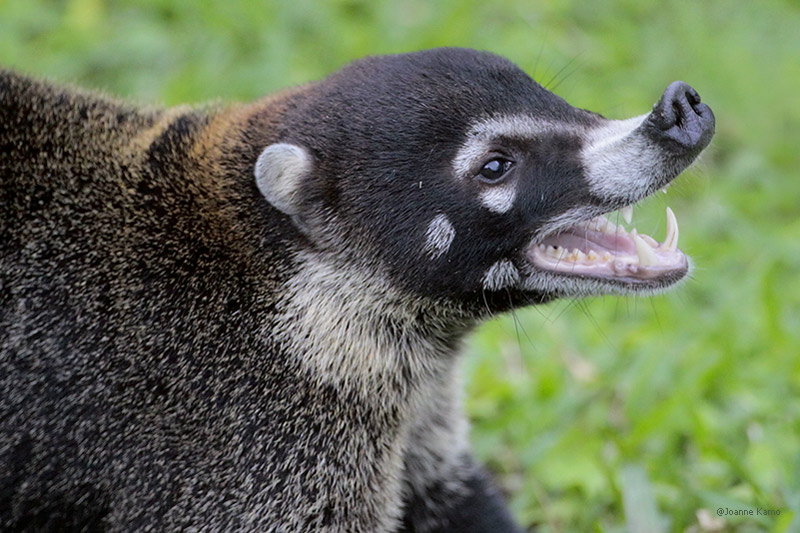

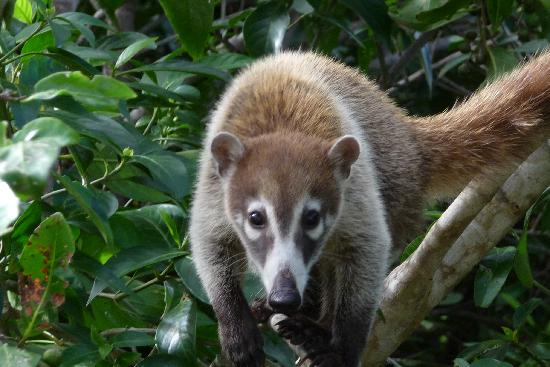

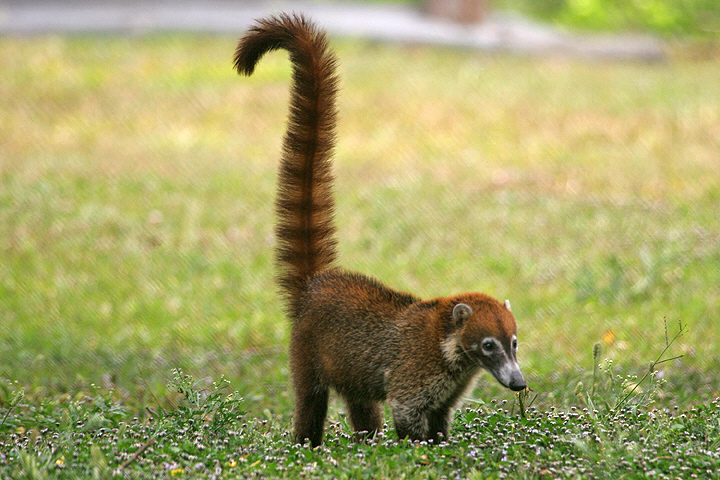

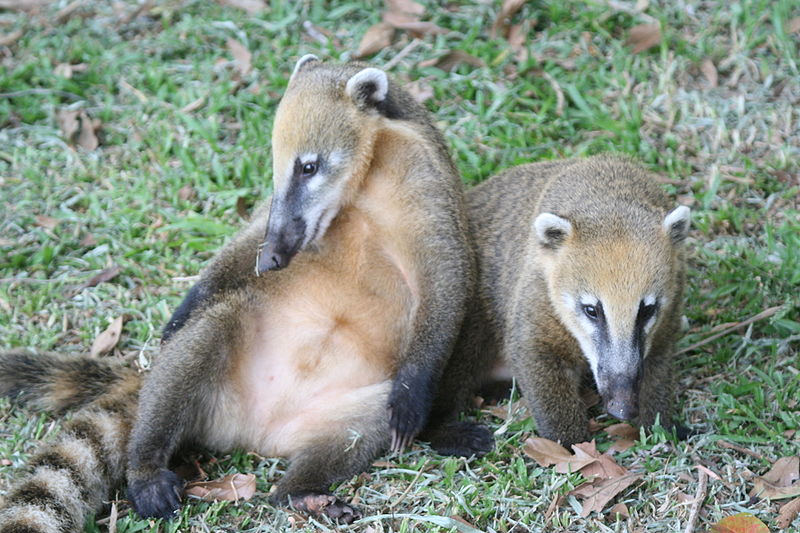
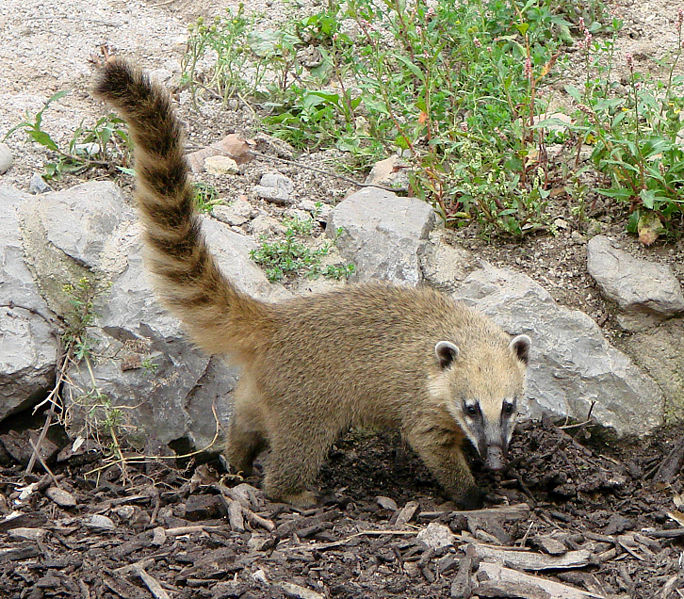
 Animalia Life
Animalia Life